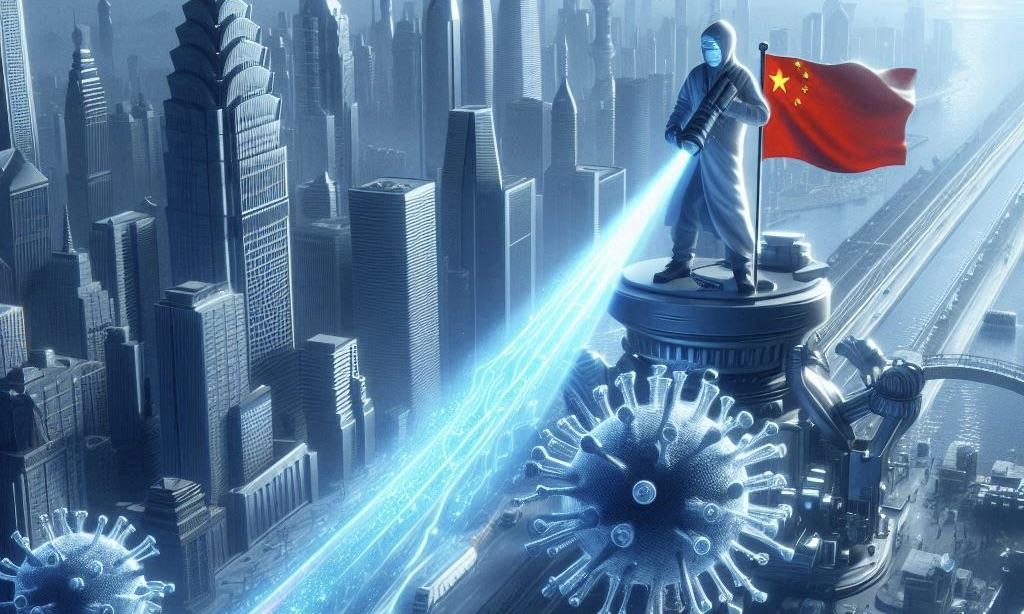China has announced a significant advancement in silicon photonics technology, potentially circumventing U.S. export restrictions on EUV lithography. JFS Laboratory in Wuhan successfully integrated a silicon-based chip with a laser source, marking a key step in China's pursuit of chip fabrication independence.
China Makes Breakthrough in Silicon Photonics, Aiming for Chipmaking Independence Amid U.S. Export Curbs
Success becomes more probable when billions of dollars are consistently allocated to address a persistent issue. China has been working to counteract U.S. export restrictions, which have deprived the country of access to state-of-the-art Extreme Ultraviolet (EUV) lithography. Nevertheless, China has reportedly taken a substantial stride toward attaining self-sufficiency in chip fabrication due to a recent breakthrough in the emerging field of silicon photonics.
For those unfamiliar with silicon photonics, it transfers data between microchips through an on-chip photonic integrated circuit (PIC) using light in the infrared spectrum rather than electric current. In a report, this method offers a significantly increased bandwidth while utilizing a mere fraction of the power of conventional chip architectures. It also capitalizes on extant fabrication methods and provides a promising solution to the constraints imposed by Moore's Law.
JFS Laboratory, a state-funded facility in the Wuhan province of China, has recently announced the most recent advancement. The laboratory has effectively integrated a silicon-based chip with a laser source, resolving "one of the few blanks" in China's optoelectronics technology. An initial investment of 8.2 billion yuan (approximately $1.2 billion) was made to establish JFS Laboratory in 2021.
Silicon Photonics Could Help China Bypass U.S. EUV Restrictions, Paving the Way for Semiconductor Independence
This advancement is being made in China, where the production of semiconductors at the 7nm node is still dependent on Deep Ultraviolet (DUV) lithography. Experts concur that China will need access to EUV lithography to produce semiconductors smaller than 7nm efficiently. Nevertheless, the United States maintains control over ASML, the Dutch company that is the exclusive supplier of EUV devices, rendering that access unavailable.
In this context, silicon photonics has the potential to bypass U.S. semiconductor restrictions altogether, thereby enabling China to embark on a new chapter in its technological aspirations. The broader geopolitical implications of this development, which could potentially result in a conflict akin to the Thucydides Trap, are a subject for future discussion.



 xAI Cash Burn Highlights the High Cost of Competing in Generative AI
xAI Cash Burn Highlights the High Cost of Competing in Generative AI  Samsung Electronics Poised for Massive Q4 Profit Surge on Soaring Memory Chip Prices
Samsung Electronics Poised for Massive Q4 Profit Surge on Soaring Memory Chip Prices  Dell Revives XPS Laptop Lineup With New XPS 14 and XPS 16 to Boost Premium PC Demand
Dell Revives XPS Laptop Lineup With New XPS 14 and XPS 16 to Boost Premium PC Demand  Aktis Oncology Prices Upsized IPO at $18, Raising $318 Million in Major Biotech Debut
Aktis Oncology Prices Upsized IPO at $18, Raising $318 Million in Major Biotech Debut  GM Takes $6 Billion EV Write-Down as Electric Vehicle Demand Slows in the U.S.
GM Takes $6 Billion EV Write-Down as Electric Vehicle Demand Slows in the U.S.  China’s AI Sector Pushes to Close U.S. Tech Gap Amid Chipmaking Challenges
China’s AI Sector Pushes to Close U.S. Tech Gap Amid Chipmaking Challenges  SK Hynix Shares Hit Record High as AI Memory Demand Fuels Semiconductor Rally
SK Hynix Shares Hit Record High as AI Memory Demand Fuels Semiconductor Rally  FCC Approves Expansion of SpaceX Starlink Network With 7,500 New Satellites
FCC Approves Expansion of SpaceX Starlink Network With 7,500 New Satellites  Lenovo Unveils AI Cloud Gigafactory With NVIDIA and Launches New AI Platform at CES 2026
Lenovo Unveils AI Cloud Gigafactory With NVIDIA and Launches New AI Platform at CES 2026  Anthropic Launches HIPAA-Compliant Healthcare Tools for Claude AI Amid Growing Competition
Anthropic Launches HIPAA-Compliant Healthcare Tools for Claude AI Amid Growing Competition  Nvidia Unveils Rubin Platform to Power Next Wave of AI Infrastructure
Nvidia Unveils Rubin Platform to Power Next Wave of AI Infrastructure  Trump Weighs Blocking Exxon Investment as Venezuela Deemed “Uninvestable”
Trump Weighs Blocking Exxon Investment as Venezuela Deemed “Uninvestable”  Ford Targets Level 3 Autonomous Driving by 2028 with New EV Platform and AI Innovations
Ford Targets Level 3 Autonomous Driving by 2028 with New EV Platform and AI Innovations  Johnson & Johnson Secures Tariff Exemption by Agreeing to Lower Drug Prices in the U.S.
Johnson & Johnson Secures Tariff Exemption by Agreeing to Lower Drug Prices in the U.S.  Chevron Seeks Expanded U.S. License to Boost Venezuelan Oil Exports Amid Sanctions Talks
Chevron Seeks Expanded U.S. License to Boost Venezuelan Oil Exports Amid Sanctions Talks  BTIG Initiates Buy on SoftBank as AI and Robotics Strategy Gains Momentum
BTIG Initiates Buy on SoftBank as AI and Robotics Strategy Gains Momentum  Trump Calls for 10% Credit Card Interest Rate Cap Starting 2026
Trump Calls for 10% Credit Card Interest Rate Cap Starting 2026 































